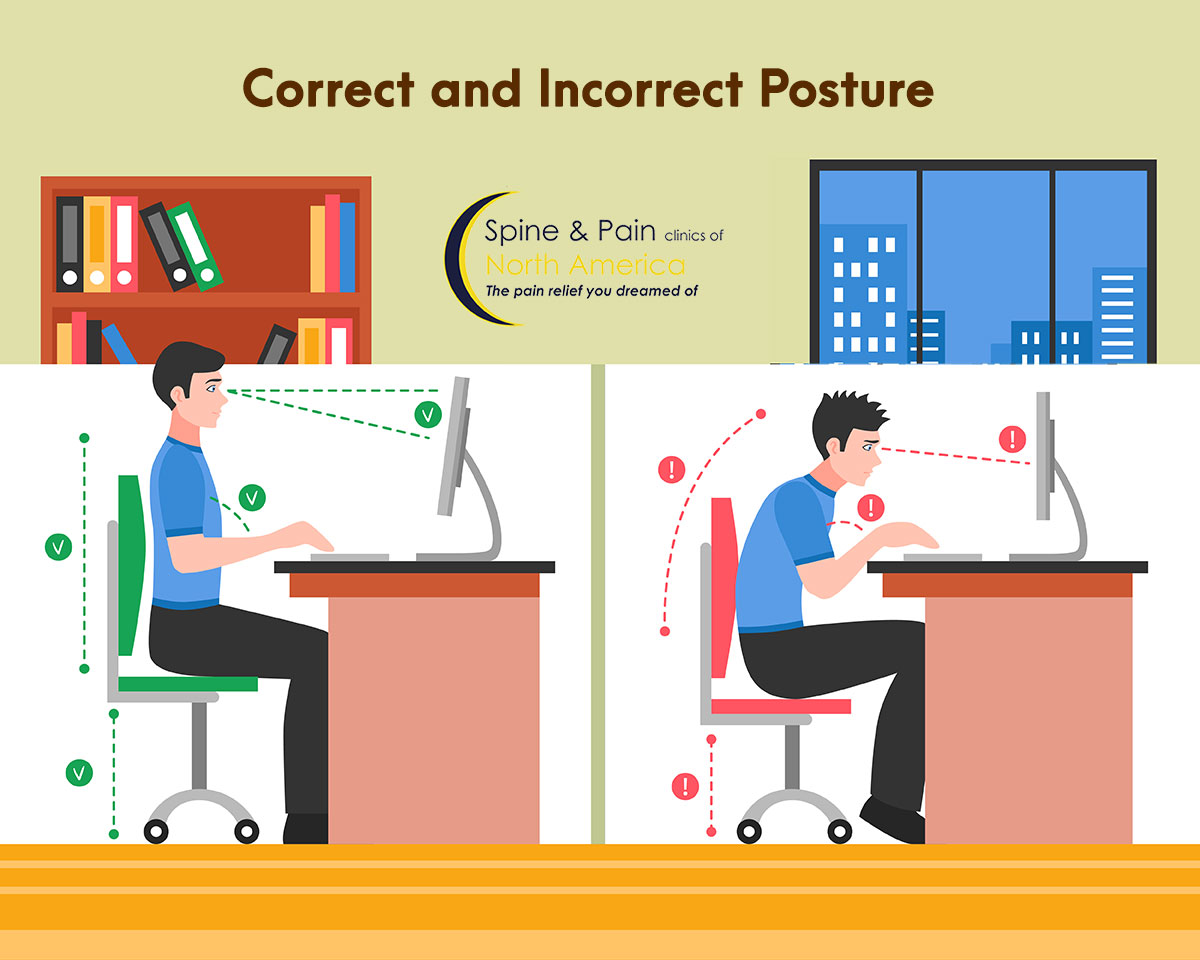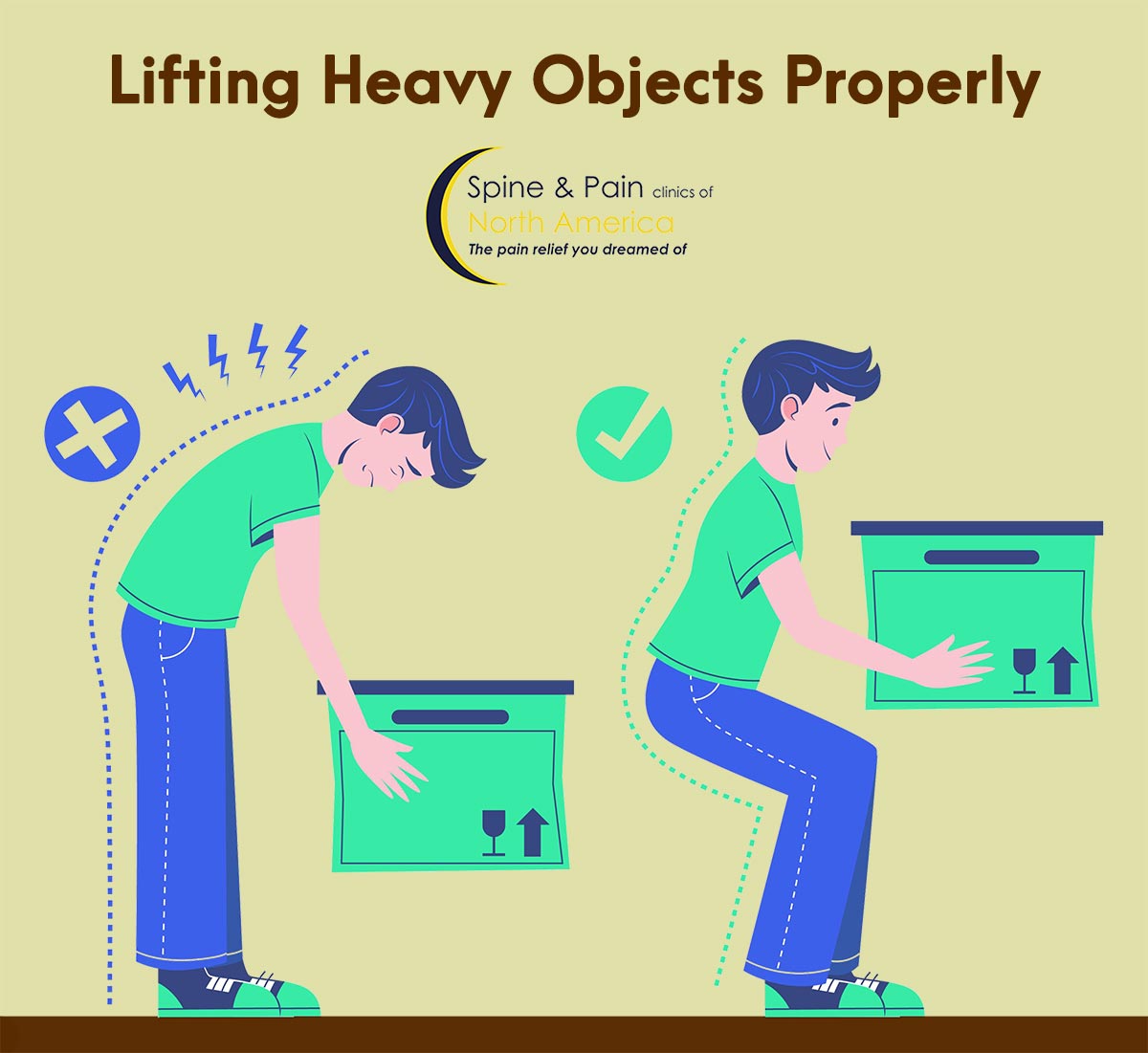Table of Contents
- What Are Ergonomics?
- What Are Musculoskeletal Disorders?
- Typical Movements Causing MSDs
- Best Practices for Workplace Ergonomics
- An Ergonomic Workplace
Every year, millions of employees develop work-related musculoskeletal disorders (MSD). The National Safety Council says 976,090 people in the private sector experienced pain from musculoskeletal disorders in 2021-2022, per the last U.S. Bureau of Labor Statistics report.
Add in public workers, and the number is closer to two million. Based on the research, estimates are that 28-33% of workplace injuries are ergonomic injuries related to workplace setup and personal behaviors, like poor posture at a desk. Implementing ergonomic principles as part of healthy workplace habits can help create a safe office environment.
What Are Ergonomics?
In simple terms, ergonomics is the science of fitting jobs to people instead of people to jobs. It considers human physical abilities and limitations related to workstation design and the work environment. Ergonomics utilizes work and workplace interventions to establish compatibility among the employees, their job responsibilities, and the work environment.
Ergonomics considers whether performing a job increases the possibility of employees experiencing overexertion, repetitive motion, or jarring, abrading or rubbing due to vibrations. It is concerned with designing and arranging workplaces to reduce the risk of injury. Ergonomic solutions also encompass people’s behaviors, like how they lift heavy items and their posture, but all within the context of their interactions with workplace materials and equipment like a desk, computer screen or counter as they perform tasks.
What Are Musculoskeletal Disorders?
Musculoskeletal disorders (MSDs) are also known as ergonomic injuries because most occur when someone performs frequent repetitive tasks or completes tasks in an awkward position. These injuries can be very painful and involve muscles, ligaments, tendons, cartilage, joints, or spinal discs. Millions of work hours are lost because people take time off to manage their injuries.
According to the U.S. Department of Labor, the nature of these injuries is as follows.
- Sprains, strains and tears (72%)
- Soreness or pain (21%)
- Hernias or traumatic incident (2%)
- Musculoskeletal diseases and diseases (2%)
- Swelling, inflammation or irritation (1%)
- Carpal tunnel syndrome (1%)
- Tendonitis (1%)
Approximately 36% of ergonomic injuries occur in the upper extremities (mainly the shoulders), 45% in the trunk (mostly the back), and 15% in the lower extremities (primarily the knees).
Typical Movements Causing MSDs
Some jobs have high rates of MSDs because their job responsibilities require sitting, twisting and lifting. They occur in all industries, like technology, retail and warehousing.
- Lifting and lowering heavy items
- Repetitive motions, like typing
- Leaning over a counter
- Maintaining an awkward posture for prolonged periods
- Frequently twisting the torso
- Using equipment that causes a vibration in the body, hand or arms

Best Practices for Workplace Ergonomics
Employees can take steps to reduce the risk of developing an MSD. They are divided into two categories: equipment ergonomics and work habits that improve ergonomics. Following are some ergonomic workplace tips for a pain-free work experience.
Office Equipment Ergonomics
Most technology jobs require sitting at a desk and typing for long periods. These activities can lead to upper or lower back pain or MSDs like carpal tunnel in the hand, wrist or arm. Since sitting at a desk is a major cause of pain, office ergonomics can help employees avoid some health problems. Research has found that sitting for more than half a day and maintaining an awkward posture increases the likelihood of having lower back pain or sciatica.
A pain-free desk setup is designed to help you maintain body alignment and avoid straining muscles.
- Keep the monitor at arm’s length or at least 20 inches away
- The top of the monitor should be at eye level
- Maintain wrists straight or below elbow level
- Keep upper arms close to the body during typing or when using a mouse
- Keep knees level with the hips
- Use a chair that provides good spine support

An ergonomic chair has a curve or pad that supports the lower back’s natural curve. It also has adjustable armrests and a height adjustment to keep your knees at 90 degrees. Sitting in a supportive and comfortable chair is essential to maintaining a good posture throughout the day.
Work Habits
Work habits, as well as equipment placement, can incorporate ergonomics.
Maintaining Good Posture
Posture is important. The office desk, chair, monitor and keyboard may be ideally situated, but poor posture is still possible. For example, slouching the shoulders and back while sitting can lead to spine pain. The vertebrae are not maintained in alignment. Some tips for proper posture at work to experience pain-free work follow.
- Keep the spine straight and avoid curving the spine
- Keep your core muscles engaging
- Maintain relaxed but not slouched shoulders
- Keep feet flat on the floor
Getting up from the desk periodically and moving around is also important. This keeps the blood flowing to your joints, muscles and other tissues, which prevents stiffness. Doing some easy desk stretches throughout the day is also helpful.
Repetitive motion disorders
Repetitive motion disorders (RMDs) include carpal tunnel syndrome, bursitis, trigger finger, tendonitis and more. They mainly occur in the hands, elbows, wrists and shoulders, though they can affect other areas like the neck, back and legs. If not addressed, RMDs can lead to temporary or permanent soft tissue damage, including in muscles, tendons, nerves and ligaments. You can also develop pain due to the compression of nerves or tissues. For example, people who regularly type for hours can develop carpal tunnel, a painful condition in which the median nerve is compressed.
Combining hours of repetitive movements and a poorly designed workplace can quickly lead to an RMD. To avoid developing repetitive motion disorders or injuries, switch up tasks to avoid repetitive movements. Always maintain good posture, whether sitting or standing. If possible, use a headset for calls instead of a phone if your job requires much phone work. Stretch regularly, wiggle your fingers and flex your wrists throughout the day.

Read the post “How to Straighten Your Back and Correct Spine Posture“
Lifting Properly
Lifting heavy objects sometimes comes with the job, not just warehouse or construction jobs. Even office workers must lift boxes of supplies, sometimes overhead, to store them. You want to engage the large leg muscles, not the small back ones, while lifting.
- Keep the load close to the body
- Maintain the curve in your back while picking up the load
- Tighten the stomach muscles
- Lift with the legs
- Pivot with the feet and avoid twisting the back
- Use a step stool when lifting something overhead, using the same technique

An ergonomic approach would also evaluate whether the storage shelves can be lowered or redesigned to minimize the need for overhead lifting or awkward movements.
An Ergonomic Workplace
These suggestions are important for knowing how to avoid back pain at work. The best news is that adhering to healthy workplace habits will minimize the risk of developing one or more musculoskeletal disorders in most of your body. Ergonomic equipment and behaviors are easy to implement, like a spine-supporting chair and maintaining good posture. There may be a learning curve, but it is well worth the effort to avoid the pain associated with MSDs.
Sources
- https://injuryfacts.nsc.org/work/safety-topics/musculoskeletal-injuries/
- https://blogs.cdc.gov/niosh-science-blog/2022/10/31/ergonomics-month-2022/
- https://www.ncbi.nlm.nih.gov/books/NBK222447/#ddd00197
- https://injuryfacts.nsc.org/work/safety-topics/musculoskeletal-injuries/
- https://blogs.cdc.gov/niosh-science-blog/2022/10/31/ergonomics-month-2022/
- https://pmc.ncbi.nlm.nih.gov/articles/PMC2200681/
- https://www.ninds.nih.gov/health-information/disorders/repetitive-motion-disorders
- https://ors.od.nih.gov/sr/dohs/Documents/pamphlet-ergonomics-good-for-everybody.pdf
